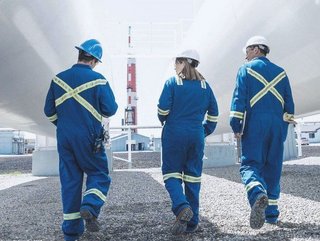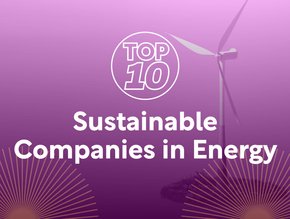Top 10 issues facing the energy industry

McKinsey's Global Energy Perspective 2022 offers a detailed demand outlook across 55 sectors, across more than 70 energy products, and 146 countries.
The scenarios it explores are not exhaustive in the realm of all possible outcomes, and currently do not reflect the impact of the invasion of Ukraine on energy markets.
The report covers a range of outcomes, from strong decarbonisation in line with many of the recent net-zero pledges to a scenario that sees fading momentum for a transition of the global energy system.
Here are 10 key issues facing the energy sector.
10: Tackling carbon emissions
Following a significant decline in 2020, emissions showed a strong rebound in 2021, almost returning to 2019 levels; emissions in 2021 were only 1% lower than 2019 levels.
To meet the requirements for a 1.5° pathway, mature economies would likely need to accelerate their annual emissions' decline, on average, by a factor of eight to nine times compared to efforts in the last 10 years.
Emissions from emerging economies are projected to continue to grow over the next decade; these countries may need to move to lower-carbon growth paths sooner and reach their emissions peaks earlier.
09: New investment and value pools
Energy investments may need to grow 4% a year to support the energy transition, with new technologies capturing more than 65% of the investments to 2035.
Renewables are projected to account for more than 30% of the global investments in the next 15 years (excluding transmission and distribution reinforcements). This is twice as high as projected investments in conventional power generation, and almost on par with oil and gas investments.
08: Energy technologies go from niche to mainstream
The growth in sustainable fuels is driven by the decarbonisation ambition in much of the latest regulation, recent investments, and technological advancement.
This is expected to include both different types of biofuels as well as power-to-gas fuels. By 2050, the share of sustainable fuels in the energy demand for transportation could be between 6% and 37%, depending on net-zero ambition levels across countries.
07: Scaling CCUS
CCUS is niche today but is projected to scale notably, reaching more than 2-4 Gt by 2050. This will likely require a significant acceleration compared to the current pipeline.
In the current trajectory scenario, CCUS demand would reach more than 2.1 Gt by 2050, assuming the scale up is mainly in line with today’s pipeline.
However, CCUS uptake is subject to uncertainty, mostly driven by a lack of clarity on commercially viable business models of CCUS relative to alternative decarbonisation levers, as well as with regulatory development.
06: Sustainable Fuels
Sustainable fuels can provide GHG reductions comparable to BEVs and are applicable in multiple sectors - and demand for sustainable fuels is projected to triple over the next 20 years.
Investments in sustainable fuels are gaining momentum, with around $40-$50bn of investment expected by 2025. However limited availability of certain bio-feedstocks calls for the uptake of other advanced options.
New advanced feedstocks will likely be necessary to meet the growing demand for sustainable fuels.
05: Transport, industry and hydrogen
In the Further Acceleration scenario, before 2035, 29 Mt (30%) of hydrogen demand growth is projected to come from new industrial uses such as iron and steel, driven by early decarbonization targets and by new-built plants.
Another 26Mt (30%) comes from road transport, driven by the increasing cost competitiveness of hydrogen vehicles Hydrogen demand is projected to accelerate after 2035 across all sectors, with road transport and new industrial uses still accounting for more than 50% of demand growth.
04: Growing hydrogen demand
Hydrogen demand is projected to grow fivefold by 2050, driven primarily by road transport, maritime, and aviation.
Hydrogen supply is projected to shift from nearly 100% grey hydrogen to 60% clean production by 2035, as costs decline and policymakers support hydrogen technology adoption.
Three fundamental enablers may be needed to support the development of the hydrogen economy: infrastructure and supply chains; technology advancement and manufacturing scale-up; and government support.
New trade flows could emerge to connect demand centres with resource-rich regions.
03: oil demand peaks and growing gas demand
Liquids demand is projected to peak within this decade. The primary driver for the reduction in growth is a slow-down in demand growth for road transport and continued uptake of EVs.
Conversely gas demand is projected to grow by 10% in the next decade in all scenarios, and peak by 2035. After 2030, gas projections diverge across scenarios driven by increasing decarbonisation pressure in buildings and industry.
The regional shift of gas demand to Asia is expected to continue, as China’s role of demand-growth engine is taken over by Southeast Asia after 2030.
02: Renewables to lead power generation
In all scenarios, renewables are projected to lead the power generation mix, reaching 80-90% in 2050.
Most of the growth is expected to come from solar and onshore wind, due to declining costs, and they are projected to make up 43% and 26% of generation respectively in 2050 under the Further Acceleration scenario.
Offshore wind is projected to remain limited to less than 7% of global generation due to permitting constraints and policy hurdles, with potential to grow further if constraints on onshore wind such as land use persist.
Thermal generation is still expected to play an important role as a flexibility provider, with gas providing substantial shares of base-load generation up to 2040 in regions with favourable fuel costs, while nuclear generation is still expected to require economic support from policies, which is not yet present in many regions as public acceptance continues to prove challenging.
01: Global energy shifts rapidly to electricity and hydrogen
Global energy consumption is projected to flatten in the coming decades. Despite rapid growth of the global economy and population growth of two billion people, energy consumption is projected to grow by only 14% Continued reductions in the energy intensity of GDP are a key driver, triggered by greater end-use efficiency in buildings, transport, and industry.
Electrification plays an important role, as a shift to electrical solutions tends to come with a step-change in efficiency in many segments, such as space heating and passenger cars.
The role of electricity in the final consumption mix is projected to grow from more than 20% today to 40% by 2050. The corresponding doubling of electricity consumption combined with uptake of hydrogen is projected to offset fossil-fuel consumption (which excludes primary demand of coal and gas for power generation), which could be more than 40% lower in 2050 compared to 2020.






